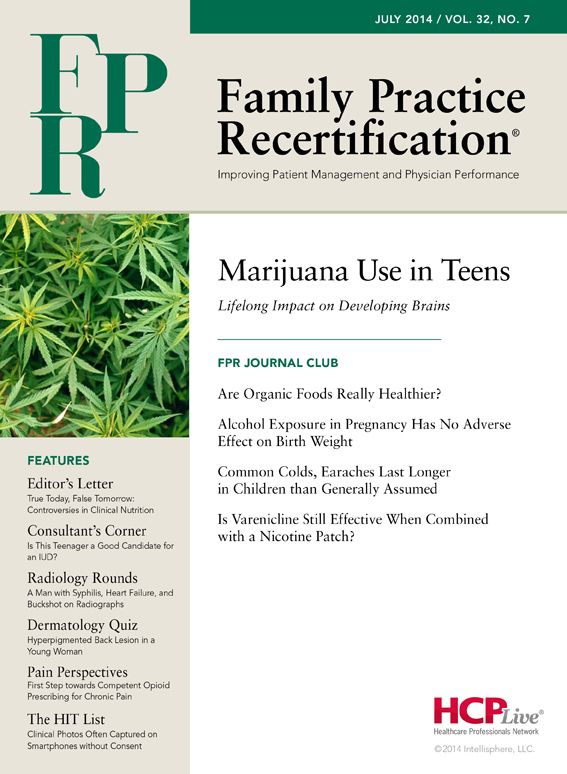First Step towards Competent Opioid Prescribing for Chronic Pain
Despite the negative publicity surrounding opioid analgesics in the management of chronic pain, the medications should not be omitted from any respectable pain physician's armamentarium.

Michael E. Schatman, PhD, CPE
Despite the negative publicity surrounding opioid analgesics in the management of chronic pain, the medications should not be omitted from any respectable pain physician’s armamentarium.
The popular press has done its best to vilify opioids, creating a climate of what has been described as “neuromysticism.”1 In conjunction with legal actions and regulatory sanction against physicians who have heavily prescribed opioids, this media sensationalism has created a climate in which many providers — including family physicians – are fearful of prescribing painkillers.2
Certainly, chronic opioid therapy is fraught with hazards, so recognizing the problems associated with the medications is, perhaps, the first step towards becoming a competent prescriber.
In the first decade of the current millennium, pain medicine in the United States was characterized by indiscriminate prescribing fueled by unscrupulous pharmaceutical company marketing, alongside academic dishonesty.3 Although pain specialists promoted increased opioid use, the shortage of such specialists resulted in primary care physicians (PCPs) often prescribing painkillers suboptiminally.4
According to critics, one of the problems associated with chronic opioid therapy is the lack of a long-term evidence basis.5 Although randomized clinical trials of at least 16 weeks in duration are deficient, we cannot infer that no patients will benefit from this type of treatment.6 Critics also point to the emerging bodies of literature on opioid-induced hyperalgesia and endocrinopathy, but the data hardly indicate that all patients on chronic opioid therapy will develop these iatrogenic complications.
A number of states have either passed laws or begun the process of passing laws that limit the dosages of opioid analgesics that can legally be prescribed. However, these morphine-equivalent daily dosages (MEDDs) are arbitrary and, frankly, draconian. Due to the sensationalism resulting from years of credulous opioid prescribing, abuse, diversion, overdose, and death, legislators are relying on capricious “pseudoscience” to determine “appropriate” dosage levels. Just as we lack data that support the long-term efficacy of opioids, those responsible for passing these laws cannot produce data that indicate “this much is too much.”
As our understanding of pharmacogenomics, ethnogenetics, genetic predisposition to pain, and drug metabolism interactions expands, we are beginning to better appreciate the enormous variability in responses to pain medications. In many countries with national health services, pharmacogenomics testing prior to opioid prescribing is helping physicians more accurately select the medication that is most likely to be effective for a specific patient with lower levels of side effects and adverse events.
No one ought to suggest that prescribing opioids is easy. But, in order to help relieve patients’ suffering, it must be executed in a cautious and mindful manner. Therefore, it can certainly be argued that opioid prescribing is one part science and another part art.
In many ways, PCPs are the thinkers of the medical world. Accordingly, they may have the potential to best prescribe this class of medications safely and efficaciously. Subsequent installments of this column will discuss strategies for opioid prescribing that will optimize patients’ comfort and functioning while simultaneously safeguarding primary care practices.
References
1. Atkinson TJ, Schatman ME, Fudin J. The damage done by the war on opioids: the pendulum has swung too far. J Pain Res. 2014;7:265-8. http://www.ncbi.nlm.nih.gov/pmc/articles/PMC4026559/.
2. Cheatle MD, Savage SR. Informed consent in opioid therapy: a potential obligation and opportunity. J Pain Symptom Manage. 2012 Jul;44(1):105-16. http://www.ncbi.nlm.nih.gov/pubmed/22445273.
3. Schatman ME. (2014). Corporate commoditization in pain medicine: increased profits translate to increased suffering. In Giordano J (ed.). Augmenting Human Painlessness. New York: Springer. (in press).
4. Deyo RA, et al. Opioids for back pain patients: primary care prescribing patterns and use of services. J Am Board Fam Med. 2011 Nov-Dec;24(6):717-27. http://www.ncbi.nlm.nih.gov/pubmed/22086815.
5. JC Ballantyne, NS Shin. Efficacy of opioids for chronic pain: a review of the evidence. Clin J Pain. 2008 Jul-Aug;24(6):469-78. http://www.ncbi.nlm.nih.gov/pubmed/18574357.
6. Sehgal N, Colson J, Smith HS. Chronic pain treatment with opioid analgesics: benefits versus harms of long-term therapy. Expert Rev Neurother. 2013 Nov;13(11):1201-20. http://www.ncbi.nlm.nih.gov/pubmed/24175722.
About the Author
Michael E. Schatman, PhD, CPE, is a clinical psychologist who has spent the past 27 years working in pain management. He is currently the Executive Director of the Foundation for Ethics in Pain Care in Bellevue, WA, where he also maintains a part-time practice in pain psychology. Schatman is the author of more than 80 peer-reviewed and invited journal articles and book chapters on pain management, and he lectures regularly on both local and national bases. He is the editor of Ethical Issues in Chronic Pain Management and Chronic Pain Management: Guidelines for Multidisciplinary Program Development, both of which were released in 2007. Currently, he is Editor-in-Chief of the Journal of Pain Research, Ethics Section Head Editor of Pain Medicine and Psychological Injury & Law, and Deputy Editor-in-Chief of the International Journal of Cannabinoid Medicine. Schatman serves on the Board of Directors of the American Society of Pain Educators, which named him 2011 Clinical Pain Educator of the Year.
